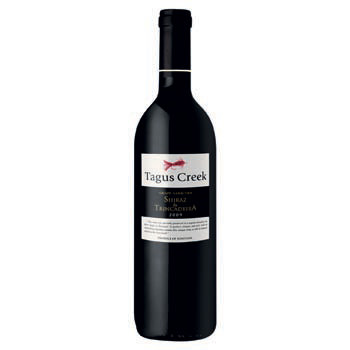Get Premium access to all the latest content online
Subscribe and view full print editions online... Subscribe
The next time you reach for a Spanish wine, think again and look west, suggests Adam Lechmere, to the unique and diverse offerings of Portugal
Sometimes it’s difficult to remember that Portugal has a thriving, long-established table wine industry. Could you name the grape varieties that produce the red wines of the Douro? You’ll have drunk tinta roriz hundreds of times, but you’ll know it under its Spanish name, tempranillo. The fact that tempranillo is famous as the grape of Rioja, yet few would recognise tinta roriz as one of Portugal’s stalwarts, is a clue to the brilliance, and sheer cussedness, of the Portuguese wine industry.
Poor Portugal, constantly outshone by her fl ashy big sister, Spain. Take the two countries’ musical traditions: Spain has fl amenco, Portugal has fado: ‘music characterised by mournful tunes and lyrics, often about the sea or the life of the poor’, as the encyclopedia puts it. Sure pulls you in.
Hang on though. Mournful? Anyone who has been on the receiving end of Portuguese hospitality knows they have an easy, laid-back charm, and tremendous charisma. Unlike Spain, they just don’t shout about it.
Which brings me back to tinta roriz, or aragonez, as it’s also known. They could have called it tempranillo, or in some other way cleverly piggy-backed on the Spanish grape’s global popularity, but they didn’t.
The Portuguese wine industry seems a marketer’s nightmare. Its varieties are unpronounceable and impossible to spell. Touriga nacional, trincadeira, alforcheiro. They don’t exactly trip off the tongue.
But here’s the thing. Wine regions are waking up to the fact that in a globalised world, individuality is vital. The trend now is towards local, indigenous grape varieties. We’re not interested in cabernet sauvignon from Roussillon – we want carignan. In the New World, where they can’t capitalise on indigenous grapes, they’re pushing sub-regionality. Anyone can make chardonnay, but only in Adelaide Hills can you make Adelaide Hills chardonnay.
And only in the Douro Valley can you make a red blend from the 90-odd varieties found in the ancientport vineyards. Portugal’s table wine tradition goes back centuries, but only recently have producers started exploiting modern technology to make exportable wines. Portugal is a treasure trove of ancient varieties – about 300 at the last count. The country is one of the world’s biggest wine producers, and is home to one of Europe’s thirstiest populations. It’s been more or less isolated for centuries, so its wine industry has grown up ignorant of world trends. You get the impression they’re still not that interested in supermarket listings – a winemaker once told me how he set the dogs on one representative who tried to bully him into adding more residual sugar to his rosé. Olé.
So, search around. Look out for wines from Alentejo, the parched central plain that has cool summer nights; the appellations of the Algarve where Cliff Richard makes rustic reds; the bright, powerful reds of the Douro or their earthier cousins in the Dão. Just don’t look too hard for cabernet or chardonnay.
Dense, sweet aromas, with lots of savoury, meaty, earthy fl avours on the palate. Notes of plums and cherries. This is a clean, fresh, precise, long and luscious wine. Drink it with strong-fl avoured meats.
Available at:Ince Wines

When I tasted this I wrote ‘superb’ twice: when I sniffed, and when I swallowed. It’s fresh and crisp, with notes of melons, cut apples, pears, citrus; and hints of toast and marmalade. Great with seafood such as crab and lobster.
Available at:Everywine

Deep, leathery, bright fruit – damsons, plums and dark cherries. Underlying tannins and fresh acids. Must have food with it – meaty pasta and barbecued lamb or chicken.
Available at:Marks & Spencer

A big seller that caught the attention of the Decanter World Wine Awards judges, who gave it a Regional Trophy. Ripe tannins and lots of sweet dark fruit with a hint of balsamic.
Available at:Waitrose

Fresh, lively, full of power but fine and refreshing. Lots of punchy pear, apple, and some citrus fl avours, all sitting on a layer of bright, mouthwatering, spicy acid. Strange and charming. Drink with seafood risottos and pastas.
Available at:Corks Out

Subscribe and view full print editions online... Subscribe